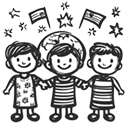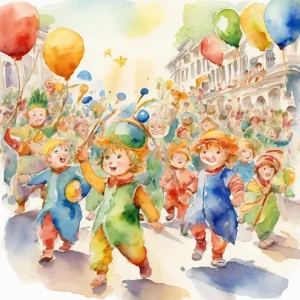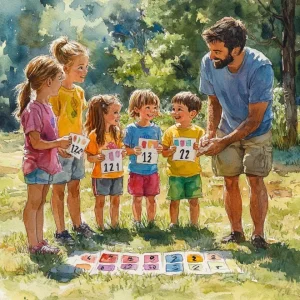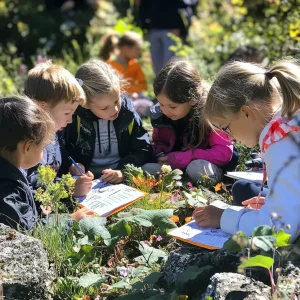Activity
Similar Activities
Joyful Sports Parade Fun and Games
Children’s Age: 2–3 years
Activity Duration: 15 minutes
"Sports Parade Fun" is an engaging activity tailored for children aged 24 to 36 months, focusing on self-care, communication skills, and cultural development through a sports-theme…
Activity Duration: 15 minutes
Magical Snack Time Adventure: Counting and Sorting Fun with Snack Time
Children’s Age: 3–5 years
Activity Duration: 5 – 20 minutes
"Counting and Sorting Fun with Snack Time" is a hands-on activity tailored for children aged 36 to 60 months to boost self-regulation and self-care skills. With small snacks, sorti…
Activity Duration: 5 – 20 minutes
Whimsical Numbers Adventure: Number Hunt Relay
Children’s Age: 3–5 years
Activity Duration: 15 minutes
The "Number Hunt Relay" activity is designed for children aged 3 to 5 to have fun while developing play skills and learning basic number concepts. With number cards, markers, and a…
Activity Duration: 15 minutes
Symmetry Magic: Reflective Art Adventure
Children’s Age: 7–10 years
Activity Duration: 10 – 25 minutes
This activity involves exploring symmetry through a creative and interactive art project for children aged 7-10 years.
Activity Duration: 10 – 25 minutes
Enchanted Discovery: Nature Scavenger Hunt with a Twist
Children’s Age: 7–8 years
Activity Duration: 10 minutes
An outdoor educational activity for children aged 7-8 involving a nature scavenger hunt with historical items, leading to a nature collage creation.
Activity Duration: 10 minutes
Bridge Builders: Eco Teamwork and Critical Thinking
Children’s Age: 8–9 years
Activity Duration: 10 – 25 minutes
An eco-conscious activity where children build bridges using popsicle sticks and tape to support toy cars, promoting teamwork and environmental awareness.
Activity Duration: 10 – 25 minutes
Nature Scavenger Hunt: Adventure in the Wild
Children’s Age: 4–9 years
Activity Duration: 10 minutes
An outdoor, nature-based activity promoting ecological awareness and cognitive development in children aged 4-9 years.
Activity Duration: 10 minutes
Cultural Collage Creations: Exploring World Wonders Together
Children’s Age: 7–9 years
Activity Duration: 10 – 25 minutes
Let's embark on a creative journey with "Cultural Collage Creations"! This educational craft project invites children to explore diverse cultures through art. Gather supplies and c…
Activity Duration: 10 – 25 minutes
Nature Quest: Explore, Learn, and Respect
Children’s Age: 10–15 years
Activity Duration: 0.5 – 1 hours
The Nature Scavenger Hunt activity is designed to help children aged 11 to 15 develop morals, academic abilities, and a love for nature. Prepare by gathering supplies like lists, p…
Activity Duration: 0.5 – 1 hours
Imaginary Adventures: Mini Bowling Feelings Story Game
Children’s Age: 2–5 years
Activity Duration: 10 minutes
An engaging activity promoting sensory development, creativity, reading, and storytelling.
Activity Duration: 10 minutes
Nature-Inspired Drawing Activity
Children’s Age: 8–9 years
Activity Duration: 10 – 25 minutes
An outdoor activity where children draw natural elements to foster creativity and ecological awareness.
Activity Duration: 10 – 25 minutes
Ecosystem Adventure Board Game - Nature's Quest
Children’s Age: 7–9 years
Activity Duration: 10 – 25 minutes
An interactive board game where children explore and learn about ecosystems through challenges and tasks.
Activity Duration: 10 – 25 minutes


























